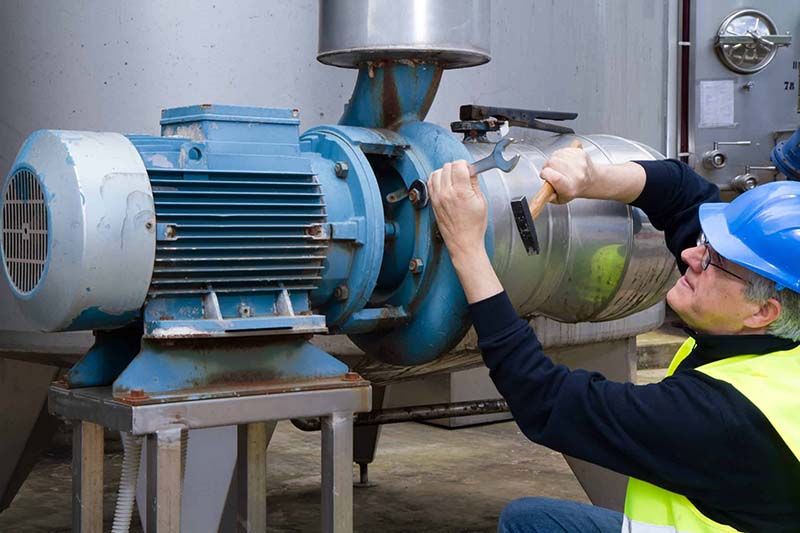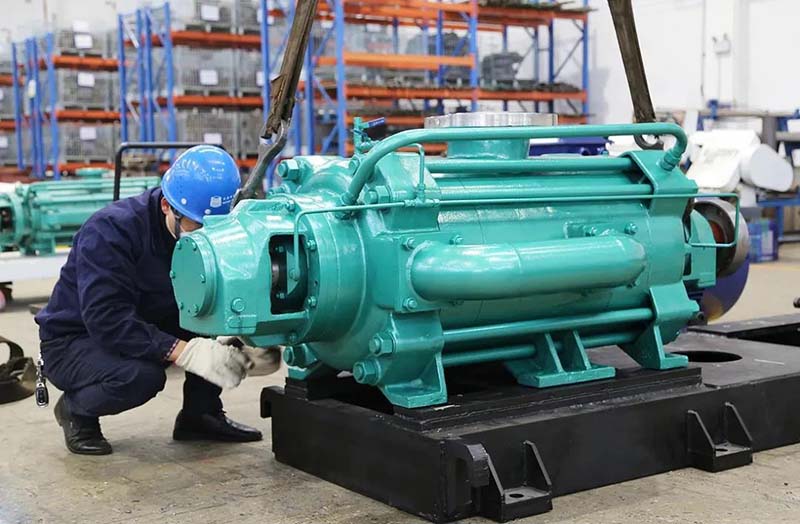Based on several studies, it is predicted that the industrial market share worldwide will be categorized into five major groups by the year 2026. These groups include construction, chemicals, oil and gas, water and wastewater, and power. There is a continuous rise in the requirement for chemical products from the manufacturing, automotive, and construction sectors to cater to the growing demand for energy and intensity and the constant increase in population. As a result, various industries and municipalities are compelled to use a broader range of centrifugal pumps.
Industrial Pumps are crucial in ensuring the efficient operation of many facilities and achieving the desired system reliability for producing their products. In this article, you can discover common mistakes, frequent pumping problems, and the corresponding solutions.
Introduction
It is essential to gain and maintain a competitive edge for users to implement effective and efficient preventative maintenance (PM) for their pumps at the plant level. Potential issues must be closely monitored and inspected, such as high or low bearing temperatures, leaky gaskets and pump flanges, shaky mounting points, weak electrical connections, and excessive vibration or noise.
Even today, human error remains one of the most significant problems in the pumping industry. Many pumping issues, such as corrosion, cavitation, and wear, develop long before they become apparent. Inadequate resources, incorrect maintenance frequencies, a lack of precision maintenance training, and failure to utilize condition-based monitoring and predictive technology contribute to these problems.
Avoid These Common Mistakes To Keep Your Pumping System Running Smoothly
Several common industrial pump mistakes are made in the industry. One of these is the misconception that packing is a more economical and forgiving option compared to mechanical seals. This mistake often stems from only considering the replacement cost of these components. However, several other factors should be considered, including the regular adjustments required for packing, high flush water usage, shaft damage, base corrosion, and more.
Some states provide incentives for decreasing water usage, which could make switching to mechanical seals a more financially attractive option in the long run. Therefore, it is vital for users to carefully evaluate all the costs associated with packing and mechanical seals before making a decision. By doing so, they can choose the option that is not only cost-effective but also reliable and efficient in the long term.

Seal Your Industrial Pump’s Performance With Proper Seal Flush Maintenance
One of the leading causes of seal and packing failure in pumping systems is the inadequate maintenance of the seal flush system. Select the appropriate flush plan for the application and ensure the flush medium is impurities-free. Failure of the seal flush can immediately negatively impact the packing.
Mechanical seals can have varying lifespans, depending on usage, and sometimes last several hours. However, without proper maintenance of the seal flush system, the lifespan of these components can be significantly reduced. It is, therefore, essential to prioritize regular maintenance of the seal flush system to avoid costly damages and prolong the lifespan of the mechanical seals.
Is Your Pumping System At Risk With Double Pumping?
Double pumping refers to using two centrifugal pumps in a pumping system, with one pump serving as a backup for the other. While this approach can offer redundancy in case of pump failure, it can lead to issues when both pumps are operated simultaneously.
Most two-pump pumping systems are designed to work with a single-duty pump and a backup pump. The piping system accommodates the flow from one pump near the Best Efficiency Point (BEP). However, when both pumps are operated in parallel into a system built to handle the flow from only one pump, it can result in poor reliability due to various flow-related issues. Both pumps may run far back on their curves, leading to inefficiencies and potential damage to the pumps. Therefore, it is crucial to ensure that the pumping system is designed appropriately to accommodate the use of multiple pumps and that they are operated correctly.
Choosing The Right Pump For Optimal System Performance
While purchasing or specifying a replacement pump, users often select the same size or choose based on efficiency, assuming these factors indicate quality. However, it is vital to assess the specific system requirements, such as the flow head and piping system, to ensure the new pump is appropriately matched. The common mistake is to select an industrial pump that is too powerful, which can cause it to operate inefficiently and potentially flow backward on its curve.
Unlocking The Secrets Of Pump Troubleshooting: Boost Performance And Save Money
You must pay attention to the piping system in a centrifugal pump before delving into troubleshooting pumps, as it plays a pivotal role in regulating pump performance. This implies that it is crucial to thoroughly check the system and piping for any underlying issues causing the pump problem before embarking on any investigation.
Neglecting this vital step may result in misdiagnosis or overlooking the root cause of the issue, leading to further complications and expenses. Hence, thoroughly inspecting the piping system is a crucial initial step in pump troubleshooting.

Maximizing Pump Performance By Avoiding Costly Pump Mistakes
Suction Piping
Specific guidelines regarding pump suction piping should be followed to ensure optimum pump performance. For example, it is recommended that the distance between the pump’s suction and the first elbow should be at least ten diameters. This is especially important for double-ended pump designs, as turbulent input flow may lead to bearing issues such as shaft thrusting. In cases where an elbow is required, it should be fitted in a plane and at a right angle to the pump shaft to avoid an uneven flow to both sides of twin suction pump impellers.
Additionally, the suction flange should receive the top of the reducer directly to ensure proper flow and avoid any complications down the line. By adhering to these guidelines, pump operators can help prevent common suction piping issues that can lead to costly repairs and downtime.
Installation Of Pipe
It is advisable to run the pipe from the pump’s suction flange to the pipe rack rather than the other way around to minimize the risk of pipe strain and prevent potential damage to the pump and piping system. This approach helps ensure the pipe is supported and aligned correctly throughout its length, reducing the likelihood of undue stress on the pump and associated components. Additionally, it can help to prevent issues such as leaks and flow disruptions that may arise as a result of misalignment or damage to the pipe.
By following this best practice, pump operators can help to ensure that their systems are running smoothly and reliably, with minimal risk of costly downtime or repairs.
Choosing The Right Pump
For a system that experiences variable flow, ensuring that the system and pump curves connect at a sharp angle is essential. When these curves intersect at an acute angle, an unstable system may result, causing problems with flow control. Therefore, ensuring that the pump and system curves intersect at a sharp angle is necessary, which helps maintain stable system performance across varying flow rates.
This approach can help prevent problems such as cavitation, excessive wear on pump components, and other issues that may arise due to inadequate flow control.

Assembling Of Pump
It is essential to record all the details of the pump rebuild process, such as the fitting of bearings, measuring shaft run-outs, and setting clearances. Additionally, to verify the oil level, mark the appropriate level (centerline of the lowest ball) on the outer part of the housing for easy confirmation.
Seals Used In Pump Housing
To prevent and control moisture from entering, using a high-quality desiccant breather and a reliable labyrinth or end face-linear bush-bearing housing seal is essential when dealing with pump housing seals.
Conclusion
From everyday activities at home to large-scale business operations, problems with industrial pumps can significantly impact. We often take the tasks we regularly perform for granted, but sound engineering is essential to ensure that things run smoothly. If issues arise due to faulty engineering, it can cause disruptions.
JEE Pumps is India’s leading pump spare parts manufacturer committed to innovation, knowledge, and quality standards. Our expertise, dedication, and vision enable us to set the benchmark for quality in the pump industry. We are known for utilizing the latest technology and techniques in fabricating pump spares, ensuring to deliver high-quality and practical products on time. As a result, our organization has consistently set the standard regarding quality, reliability, and timely delivery.


